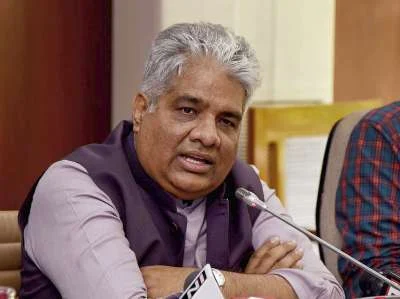*The Vital Role of Heavy Industries in Driving National Growth*
In today's fast-paced global economy, the significance of heavy industries cannot be overstated. Heavy industries are the backbone of any thriving nation, fostering economic growth, innovation, and sustainable development. As an industrialist, I have witnessed firsthand how these industries transform economies, create jobs, and lay the foundation for a prosperous future. In this blog, we will delve into the multifaceted importance of heavy industries for the growth of any country.
### 1. *Economic Growth and Stability*
Heavy industries, such as steel, automotive, shipbuilding, and machinery manufacturing, are pivotal to a nation's economic stability. They generate substantial revenue and contribute significantly to the GDP. The production and export of heavy industrial goods bring in foreign exchange, reducing trade deficits and enhancing the country’s economic position globally.
### 2. *Employment Opportunities*
The heavy industry sector is a major employment generator. It not only provides direct jobs in factories and plants but also creates numerous indirect employment opportunities in related sectors, such as supply chain, logistics, and services. By offering stable and well-paying jobs, heavy industries play a crucial role in improving the standard of living for many families and reducing poverty levels.
### 3. *Technological Advancements and Innovation*
Heavy industries are often at the forefront of technological innovation. They invest heavily in research and development (R&D) to improve efficiency, safety, and environmental impact. These innovations frequently spill over into other sectors, driving overall technological progress within the country. Advances in manufacturing technologies, automation, and materials science often originate from heavy industries and benefit the broader economy.
### 4. *Infrastructure Development*
The development and expansion of heavy industries require substantial infrastructure, including transportation networks, energy supplies, and communication systems. This infrastructure development has a ripple effect, benefiting other sectors and improving the overall quality of life. Robust infrastructure attracts further investment, both domestic and foreign, creating a cycle of growth and development.
### 5. *Boosting International Trade*
Heavy industries are integral to a country's participation in global trade. The export of heavy industrial goods, such as machinery, vehicles, and construction equipment, positions the country as a key player in the international market. This not only enhances the country's trade relations but also boosts its global economic standing and influence.
### 6. *Sustainable Development*
With the increasing focus on sustainability, heavy industries are also adapting to more eco-friendly practices. By investing in green technologies and reducing carbon footprints, they contribute to sustainable development goals. This shift not only helps in meeting environmental regulations but also opens up new markets for green products and services.
### 7. *Resource Utilization and Management*
Heavy industries often involve the extraction and processing of natural resources. Efficient resource utilization and management ensure that these resources are used optimally, minimizing waste and environmental impact. This careful management is crucial for the long-term sustainability of the country's natural resources.
### *Conclusion*
The importance of heavy industries in driving national growth is clear. They are fundamental to economic stability, job creation, technological innovation, infrastructure development, international trade, and sustainable development. As we continue to navigate the complexities of the modern global economy, the role of heavy industries will remain crucial in shaping a prosperous and sustainable future for any country.
By recognizing and supporting the growth of heavy industries, policymakers and stakeholders can ensure a resilient and dynamic economy that benefits all citizens.
FREQUENTLY ASKED QUESTIONS AND THEIR ANSWERS
### Frequently Asked Questions (FAQs)
#### 1. *What are heavy industries?*
*Answer:* Heavy industries refer to sectors that involve large-scale production and typically require substantial capital investment, large machinery, and significant raw materials. Examples include steel manufacturing, shipbuilding, automotive production, and machinery manufacturing.
#### 2. *Why are heavy industries important for economic growth?*
*Answer:* Heavy industries are crucial for economic growth as they contribute significantly to a country's GDP, create numerous job opportunities, and generate substantial revenue through both domestic sales and exports. Their development often leads to improved infrastructure and technological advancements, which benefit the broader economy.
#### 3. *How do heavy industries create employment opportunities?*
*Answer:* Heavy industries create direct jobs in manufacturing plants, factories, and production facilities. Additionally, they generate indirect employment in related sectors such as supply chain management, logistics, maintenance, and various service industries. This wide-reaching job creation helps improve living standards and reduce poverty.
#### 4. *What role do heavy industries play in technological innovation?*
*Answer:* Heavy industries invest heavily in research and development to enhance efficiency, safety, and environmental sustainability. These innovations often extend beyond the industry itself, driving technological progress across various sectors and contributing to overall economic development.
#### 5. *How do heavy industries contribute to infrastructure development?*
*Answer:* The establishment and expansion of heavy industries necessitate the development of robust infrastructure, including transportation networks, energy supplies, and communication systems. This infrastructure not only supports the industries themselves but also benefits other sectors, attracting further investment and fostering economic growth.
#### 6. *What is the impact of heavy industries on international trade?*
*Answer:* Heavy industries play a key role in international trade by producing goods such as machinery, vehicles, and construction equipment for export. This enhances a country's trade balance, strengthens international trade relationships, and boosts its global economic standing.
#### 7. *Are heavy industries compatible with sustainable development goals?*
*Answer:* Yes, heavy industries are increasingly adopting sustainable practices by investing in green technologies and reducing their environmental footprint. By aligning with sustainable development goals, these industries help meet environmental regulations and open new markets for eco-friendly products and services.
#### 8. *How do heavy industries manage natural resources efficiently?*
*Answer:* Heavy industries focus on efficient resource utilization and management to minimize waste and reduce environmental impact. This includes adopting advanced technologies for resource extraction and processing, implementing recycling practices, and striving for energy efficiency to ensure long-term sustainability.
#### 9. *What are some examples of heavy industries?*
*Answer:* Examples of heavy industries include steel production, shipbuilding, automotive manufacturing, aerospace engineering, and the production of industrial machinery and equipment.
#### 10. *How can policymakers support the growth of heavy industries?*
*Answer:* Policymakers can support the growth of heavy industries by creating favorable regulations, providing incentives for investment, investing in infrastructure, and fostering a skilled workforce through education and training programs. These measures can help ensure a resilient and dynamic industrial sector.
By addressing these frequently asked questions, we hope to provide a comprehensive understanding of the vital role heavy industries play in driving national growth and their multifaceted impact on the economy.









































